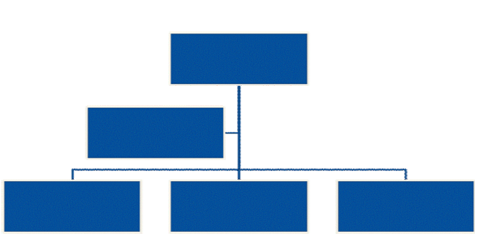Aviation | Governance | History

History
The first ancestor of the current Services Commission (SERCOM) Standing Committee on Services for Aviation (SC-AVI) was the Commission for the Application of Meteorology to Air Navigation (CAMAN) established by the Paris Conference of Directors of the International Meteorological Organization (IMO) as early as 1919.
The rapid development of the civil aviation after the end of the World War I required the development of internationally-agreed methods and procedures to address the needs of the aviation community for meteorological data and information. It should be noted that already in 1920 regular air services were established between London, Paris, Brussels and Amsterdam.
International civil aviation wanted observing stations at airports and forecasting offices at the more important ones. Another essential need was for a telecommunications system to permit the rapid interchange of reports between one airport and another, including special priority for reports of sudden deteriorations. All these requirements were so compelling that civil aviation authorities throughout the world were prepared to help in the financing of surface and upper-air observing stations at important locations, including airports, in the world-wide planning of air routes.
The rapid expansion of civil aviation resulted in existing national meteorological services improving their observing networks and new national meteorological services being created, some of them by the civil aviation department in their country and so with responsibilities exclusively for civil aviation. Reports from all these observing stations were, of course, available for other purposes including research and the provision of weather forecasts for shipping, agriculture, the general public and so on.
The CAMAN in those early years had to coordinate with another new body – the International Commission for Air navigation (ICAN). However, this coordination was complicated by the fact that CAMAN was not an inter-governmental body. Therefore, IMO, at its Warsaw Conference of Directors in 1935, replaced CAMAN by a new International Commission for Aeronautical Meteorology (ICAeM) consisting of members appointed by governments in order that it could work effectively with ICAN. Thus, ICAeM became the first inter-governmental body in meteorology and its experience influenced the transformation of IMO after the World War II into the inter-governmental World Meteorological Organization (WMO).
The First World Meteorological Congress (Cg-I) in 1951 established technical commissions including the Commission for Aeronautical Meteorology (CAeM) on the basis of the ICAeM. During the same period, WMO and the International Civil Aviation Organization (ICAO) established formal 'working arrangements' that entered into force on 1 January 1954. Over the subsequent decades, the CAeM held conjoint sessions with ICAO, normally during so-called 'Meteorology Divisional meetings' as well as independent sessions. For example, in July 2014 the Fifteenth Session of the CAeM (CAeM-15) was convened conjointly with the 2014 ICAO Meteorology Divisional Meeting (MET/14), while four years later in July 2018 WMO independently convened the Sixteenth Session of the CAeM (CAeM-16).

Recent developments
At the Eighteenth World Meteorological Congress in June 2019, through Resolution 7 (Cg-18), the Organization established, in accordance with Article 8 (g) of the Convention [of WMO], the following technical commissions for the eighteenth financial period [2020 to 2023 inclusive]:
- Commission for Observation, Infrastructure and Information Systems (Infrastructure Commission or INFCOM), and
- Commission for Weather, Climate, Water and Related Environmental Services and Applications (Services Commission or SERCOM).
Congress also decided, through the same resolution, to disband all technical commissions that had been active during the seventeenth financial period [2016 to 2019 inclusive] - including the Commission for Aeronautical Meteorology (CAeM) - upon the competition of a transition period. As a consequence, the CAeM-16 session in July 2018 was the last such session of the intergovernmental CAeM.
Consistent with the outcomes of Cg-18, through Resolution 1 (SERCOM-1) of the first session of the Services Commission held in 2020, the Organization established, inter alia, a Standing Committee on Services for Aviation (SC-AVI) for the period 2020 to 2023. Under the oversight of SERCOM, the SC-AVI is the primary constituent body of WMO addressing the provision of meteorological service for international air navigation.
In March 2024, through Resolution 5.2/1 (SERCOM-3) [provisional resolution number], SC-AVI was re-established by the Services Commission for the period 2024 to 2027.
CLICK HERE for more information on SC-AVI
CLICK HERE for more information on SERCOM
Former presidents of the Commission for Aeronautical Meteorology (CAeM)
| 1951-1959 | Mr A.H. Nagle | United States of America |
| 1959-1964 | Mr A. Silva de Sousa | Portugal |
| 1964-1967 | Mr W.A. Dwyer | Australia |
| 1967-1971 | Mr N.A. Lieurance | United States of America |
| 1971-1976 | Mr P. Duvergé | France |
| 1976-1982 | Mr R.R. Dodds | Canada |
| 1982-1990 | Mr J. Kastelein | Netherlands |
| 1990-1999 | Mr C. Sprinkle | United States of America |
| 1999-2006 | Mr N.D. Gordon | New Zealand |
| 2006-2010 | Mr C. McLeod | Canada |
| 2010-2018 | Mr C.M. Shun | Hong Kong, China |
| 2018-2020 | Mr I. Lisk | United Kingdom of Great Britain and Northern Ireland |
Former and presiding chairs of the Standing Committee on Services for Aviation (SC-AVI)
| 2020-2024 | Mr I. Lisk | United Kingdom of Great Britain and Northern Ireland |
| 2024-present | Ms A. Henderson | Australia |
CLICK HERE to return to our homepage
